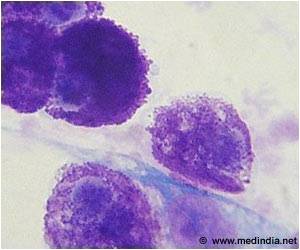- Circulating tumor cells (CTCs) represent cancer cells that have detached from the main cancer and are spreading to other tissues via the blood stream.
- Current study has modified a naturally occurring opsonin, mannose-binding lectin (MBL) by fusing it to a Fc antibody fragment (FcMBL).
- FcMBL when coated with magnetic beads binds to the circulating tumor cells and marks them for destruction by host immunity.
New Target In the War Against Cancer - The Reason Behind This Study
Several studies and research projects are still continuing to work at finding the elusive cure against cancer although giant strides have been made and several new immunotherapies have been developed to keep cancer in check and improve the quality of the patient’s life and prolong survival. When the tumor cells detach from a primary malignancy, they gain access to the blood stream (circulating tumor cells or CTCs) and spread to other parts of the body forming metastases; they then signify a stage in the cancer which has a graver prognosis and one that is more difficult to treat.Currently, there are not many effective agents that target these circulating cells which probably make up 1 out of ten thousands of cells in the blood making it all the more difficult to recognize and capture them.
Modified FcMBL Opsonin To Capture Circulating Tumor Cells
To overcome the existing gap, scientists at the Wyss Institute adapted the FcMBL, originally engineered to act as a broad-spectrum microbial capturing agent, to target these CTCs instead.- Most of the cancer cells express aberrant sugar molecules on their surface similar to pathogens and are therefore vulnerable to capture by the MBL opsonin.
- The carbohydrate molecules expressed by healthy body cells are not bound by the MBL opsonin.
- The mannose binding lectin was fused with the Fc antibody fragment to stabilize it. This combination was termed FcMBL.
- When magnetic beads coated with FcMBL were added to a suspension of pathogens, the opsonin bound the pathogens like flies to flypaper.
- When a magnetic field was then applied, the beads dragged the bound cells towards the magnet.
- The team tested the activity of the FcMBL against cancer cells by implanting fluorescent-labeled breast cancer cells in mice and 4 weeks later, tested the blood of the mice for the presence of CTCs by adding the FcMBL opsonin coated magnetic beads and applying a magnetic field.
- It was seen that CTCs bound to the opsonin were moving rapidly compared to normal cells. The concentrations of CTCs in blood was shown to be reduced by more than 93%.
- The scientists then tested the FcMBL coated beads against six additional cancer cell types, including lung carcinoma, human non-small cell lung cancer, and glioblastoma. The FcMBL-coated beads bound all six types of tumor cells with >90% efficiency, similar to epithelial cell adhesion molecule (EpCAM) targeting methods. Additionally they were also able to target two cancer types that are not successfully captured by anti-EpCAM antibodies (lung carcinoma and glioblastoma).
What are Opsonins?
A molecule that aids recognition and promotes engulfment of the target cell (microbe, tumor cell) by the immune cell is called an opsonin. Examples include mannose binding lectin (MBL), IgG antibody and C3b. MBL binds to a range of sugars such as N-acetyl-D-glucosamine, mannose, N-acetyl-mannosamine, glucose and fucose. This allows the protein to interact with a wide selection of viruses, bacteria, yeasts, fungi and protozoa decorated with such sugars on their surfaces.How is FcMBL Superior to EpCAM in Capturing CTCs?
Current CTC binding methods mostly employ a cancer cell marker, the epithelial cell adhesion moleculeEpCAM, which is highly expressed on the surface of tumor cells. However, interestingly, EpCAM expression on cancer cells reduces when tumor cells become CTCs, making EpCAM-based tests irrelevant especially when it is most important to know if a patient's cancer has metastasized.
"Our results suggest that while the EpCAM marker can be useful for some tumors, it becomes less and less useful over time as EpCAM expression decreases and the cell becomes metastatic," says Michael Super, Ph.D., Lead Senior Staff Scientist at the Wyss Institute and co-author of the paper. "Our FcMBL system can either be used as an alternative to EpCAM-based diagnostics, or as a follow-up method once EpCAM ceases to be expressed."
The team plans to expand the current research and determine exactly which sugar molecules on the CTCs are targeted by the FcMBL opsonin to improve efficiency of capture.
References:
- Joo H. Kang, Harry Driscoll, Akiko Mammoto, Alexander L. Watters, Bissrat Melakeberhan, Alexander Diaz, Michael Super, Donald E. Ingber. An Engineered Human Fc-Mannose-Binding-Lectin Captures Circulating Tumor Cells. Advanced Biosystems, 2017; 1700094
- The role of mannose-binding lectin in health and disease. - (https://www.ncbi.nlm.nih.gov/pubmed/14568388)














